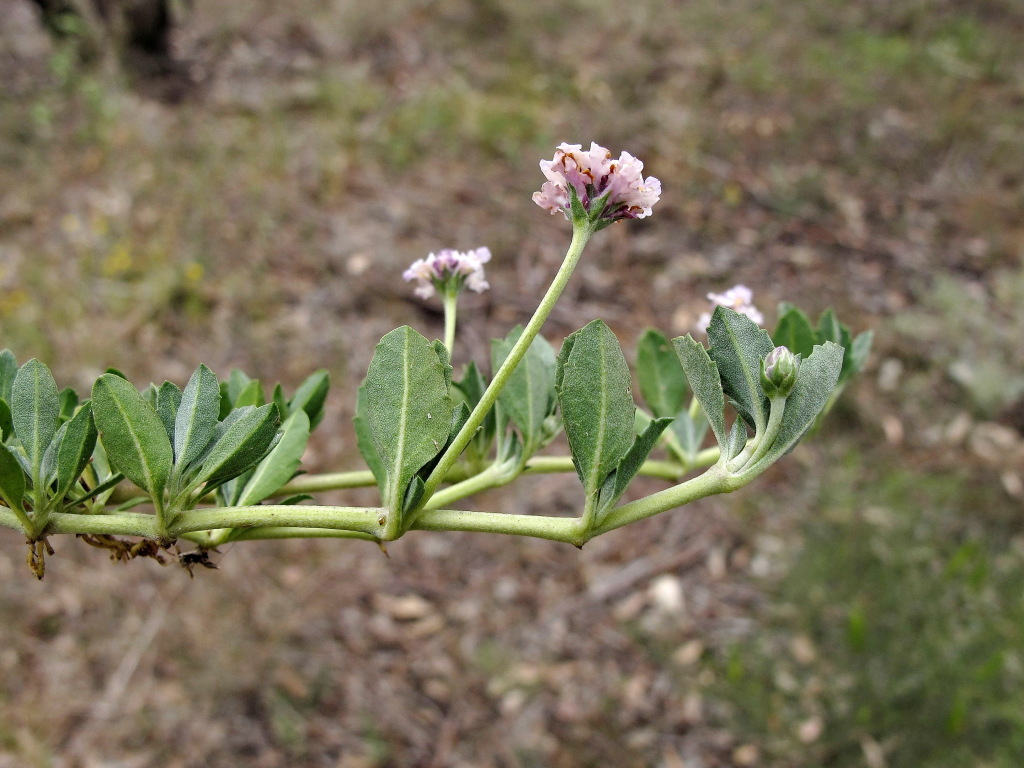Phyla nodiflora var. minor
(Hook.) N.O'Leary & MulguraStems much-branched, usually 30–90 cm long, with slender procumbent or ascending flowering branches, hoary with closely appressed hairs or nearly glabrous. Leaves obovate, spathulate, narrowly ovate or elliptic, more or less fleshy, 1–7.2 cm long, 0.4–2.5 cm wide, minutely puberulent or glabrous, margin coarsely toothed in distal half; petiole 1–8 mm long. Inflorescence with peduncles axillary, but only 1 to each pair of leaves, 1–11 cm long, spikes 1–2.5 cm long at maturity, many-flowered. Calyx shorter than bract, deeply 2-cleft, slightly 2-keeled, c. 1.5 mm long; corolla purple or pink to white, limb at first white, afterwards lilac with a darker dot, 2–2.5 mm across, the lower lip twice as long as the upper one and c. half as long as tube. Fruit c. 2 mm long. Flowers mostly Oct.–Apr.
MuM, Wim, VVP, VRiv, MSB, RobP, MuF, GipP, Gold, HNF. Sometimes grown as a lawn substitute in domestic gardens, parks etc., and naturalised in areas prone to inundation or receiving regular water as runoff etc. (e.g. road verges, streamsides, lake margins). Chiefly in the north-west, but long established at Williamstown.
Conn, B.J. (1999). Verbenaceae. In: Walsh, N.G.; Entwisle, T.J., Flora of Victoria Vol. 4, Cornaceae to Asteraceae, pp. 411–418. Inkata Press, Melbourne.
 Spinning
Spinning